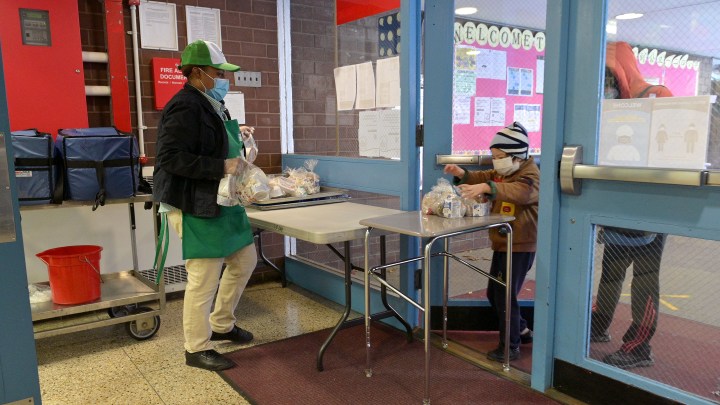
Schools find new ways to deliver free lunches during pandemic
Schools find new ways to deliver free lunches during pandemic

Thirty million kids in the U.S. qualify for free or reduced meals at schools, and that was before the increased economic woes we’re experiencing now across the country.
Missed meals will have a long-lasting impact on kids and on school finances. As a result, schools have gotten creative about getting those meals to kids who need them.
There are about 400 school bus stops scattered around Savannah, Georgia. Some are in the city, others further out. It’s a network that winds through neighborhoods and connects thousands of families to schools.
It only made sense, then, to use the bus stops to deliver meals to students.
Ann Levett, superintendent of Savannah-Chatham County Public Schools, said that when the schools offered free meal to pick up, just over 2,000 meals were served a day. But, “once we started delivering by bus, it could be up to 10,000,” Levett said.
That’s still not even close to the 24,000 free meals the district served when all students attended in-person classes.
“Nothing replaces or nothing currently comes close to having access to students every day,” Levett said.
That’s a problem for the kids and the schools, said Lauren Bauer, a fellow at the Brookings Institution.
“While many schools and districts are expending a lot of resources to provide these meals, take-up rates are much lower than the eligible population, and, in fact, much lower than they would be if schools were open all the time,” Bauer said.
Around 30 million kids around the country rely on that food. In the spring, the United States Department of Agriculture made all families eligible for free meals. Some families also qualify for Pandemic EBT, extra money for food each month.
Meanwhile, schools are spending on personal protective equipment, gas for buses to deliver breakfast and lunch, and packaging for the food.
“They’ve now had to add a whole new budget line for meal prep,” said Diane Pratt-Heavner with the School Nutrition Association. “They’re having to package up all the meals, and the cost of those packaging materials has skyrocketed because every restaurant is doing more grab-and-go, more carry out.”
Some schools are running two food operations. In San Antonio’s Northeast School District, some students attend class in person and others do so remotely.
“Because we are feeding many thousands less meals every day, the revenue that we receive from the federal government for reimbursement of meals is much less,” said Sharon Glosson, who runs the school nutrition service.
The grab-and-go meal service has already cost the district $22,000 in just packaging materials since August.
Glosson said her district is making up the cost by using money from other parts of the school budgets.
There’s a lot happening in the world. Through it all, Marketplace is here for you.
You rely on Marketplace to break down the world’s events and tell you how it affects you in a fact-based, approachable way. We rely on your financial support to keep making that possible.
Your donation today powers the independent journalism that you rely on. For just $5/month, you can help sustain Marketplace so we can keep reporting on the things that matter to you.


















